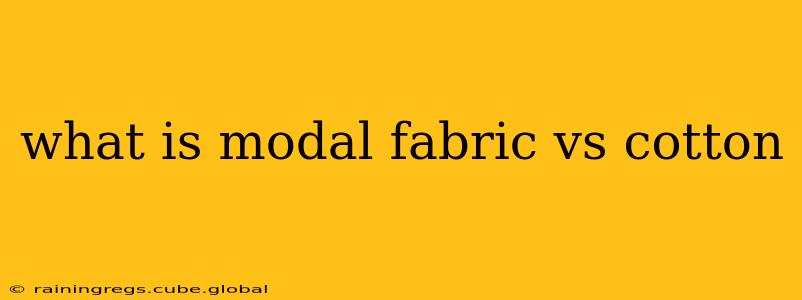Choosing the right fabric for your clothing or home goods can significantly impact comfort, durability, and overall satisfaction. Two popular choices often compared are modal and cotton. While both are natural fibers (though modal undergoes processing), they offer distinct characteristics. This comprehensive guide will delve into the key differences between modal fabric and cotton, helping you make informed decisions based on your specific needs.
What is Modal Fabric?
Modal is a type of rayon, a semi-synthetic fabric made from cellulose extracted from beech trees. Unlike cotton, which is a naturally occurring plant fiber, modal undergoes a chemical process to create its unique properties. This process results in a fabric that’s incredibly soft, smooth, and drapes beautifully.
Key Characteristics of Modal:
- Exceptional Softness: Modal's smoothness and softness are often described as surpassing even that of high-quality cotton.
- Drape and Flow: It drapes beautifully, making it ideal for flowing garments.
- Durability: Modal is surprisingly strong and durable, resisting shrinkage and pilling better than cotton.
- Moisture-Wicking: It's known for its excellent moisture-wicking capabilities, keeping you cool and comfortable.
- Color Retention: Modal fabrics tend to retain their color well, even after multiple washes.
- Eco-Friendly (Potentially): While the manufacturing process involves chemicals, sustainable modal production methods prioritize environmentally responsible practices. Look for certifications like OEKO-TEX Standard 100 to ensure eco-friendliness.
What is Cotton Fabric?
Cotton is a natural fiber harvested from the cotton plant. It's a widely used fabric known for its breathability and versatility.
Key Characteristics of Cotton:
- Breathability: Cotton's natural breathability makes it ideal for warm weather and active wear.
- Absorbency: It's highly absorbent, making it a popular choice for towels and bedding.
- Versatility: Cotton comes in various weaves and weights, suitable for various applications.
- Cost-Effectiveness: Generally, cotton is more affordable than modal.
- Susceptibility to Wrinkling: Cotton is prone to wrinkles, requiring ironing.
- Shrinkage: Cotton can shrink after washing, especially if not pre-shrunk.
Modal vs. Cotton: A Head-to-Head Comparison
| Feature | Modal | Cotton |
|---|---|---|
| Fiber Type | Semi-synthetic (Rayon from Beechwood) | Natural (Cotton plant) |
| Softness | Extremely soft | Moderately soft |
| Durability | High | Moderate; prone to pilling and wear |
| Drape | Excellent | Varies depending on weave and weight |
| Moisture-Wicking | Excellent | Good |
| Breathability | Good | Excellent |
| Shrinkage | Low | Moderate to High (depending on treatment) |
| Wrinkling | Low | High |
| Cost | Generally more expensive | Generally less expensive |
What are the benefits of modal over cotton?
Modal offers several advantages over cotton, including superior softness, better drape, and increased durability. Its moisture-wicking properties make it a comfortable choice for clothing, while its resistance to wrinkles simplifies care.
What are the benefits of cotton over modal?
Cotton's breathability and absorbency make it ideal for certain applications, especially towels and bedding. Its lower cost is another significant benefit for budget-conscious consumers.
Is modal better than cotton?
There's no single "better" fabric. The ideal choice depends on your priorities. If softness, drape, and durability are paramount, modal is an excellent option. If breathability, absorbency, and affordability are more important, cotton might be the better choice.
Which fabric is more sustainable?
Both cotton and modal production can have environmental impacts. Conventional cotton farming often involves significant pesticide use, while modal production uses chemicals in its processing. However, sustainably produced modal from responsibly managed forests and with eco-friendly processing can be a more sustainable alternative to conventionally grown cotton. Look for certifications to verify sustainable practices.
This comprehensive comparison should empower you to make informed choices when selecting between modal and cotton fabrics, ensuring you find the perfect material for your needs. Remember to consider the specific properties of each fabric to achieve the desired result in comfort, durability, and style.
